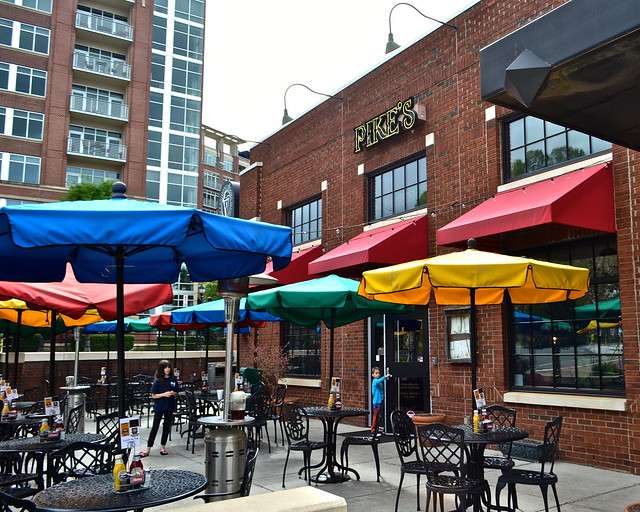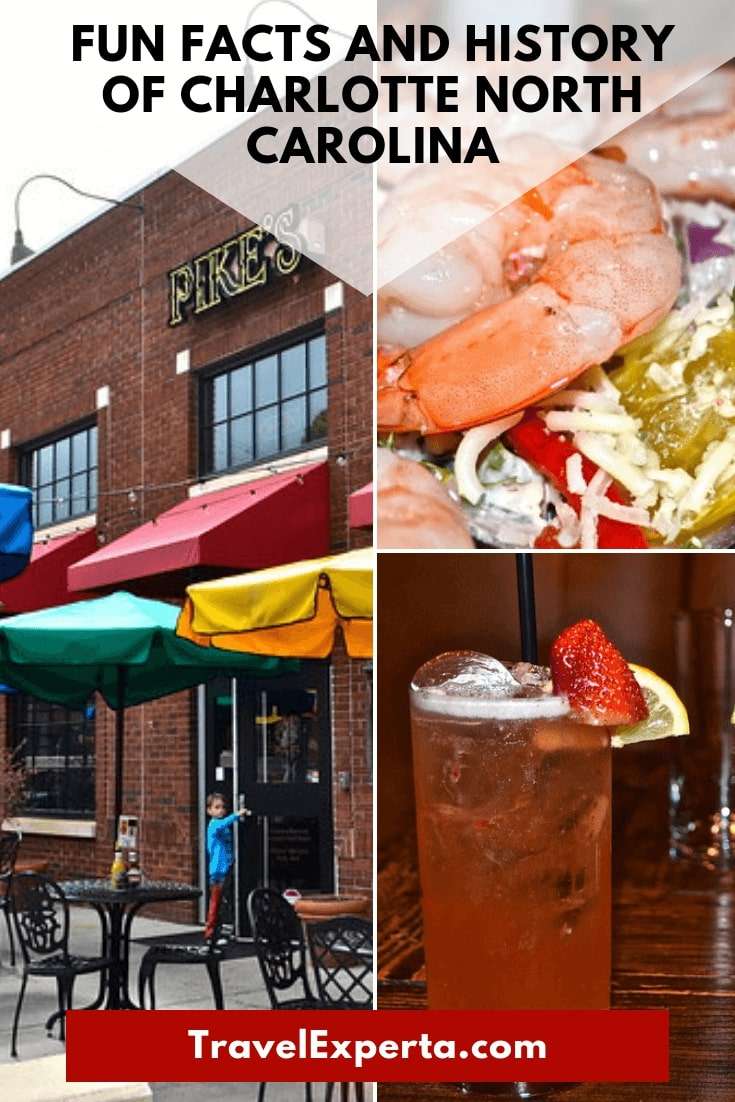Whenever traveling to new cities or towns I love to dive into the history of the place. Normally my family and I take tours to give us the full info about the place. This time we were in Charlotte but our time was limited. However, I still managed to indulge myself in learning all the coolest info and History of Charlotte North Carolina before our trip. Did you know Charlotte North Carolina has an interesting and fun history? Learn this with facts about History of Charlotte North Carolina.
Related Read: discovery center Charlotte NC

Fun Facts About Charlotte – Did You Know…
- Charlotte is the largest city in the state of North Carolina.
- It is the third fastest-growing major city in the United States.
- Charlotte is home to the corporate headquarters of Bank of America and the east coast operations of Wells Fargo. This makes it the second-largest banking center in the United States.
- Charlotte was named in honor of Charlotte of Mecklenburg-Strelitz, who had become the Queen of Great Britain just seven years before the town’s incorporation.
- Because of the previous fact, it was nicknamed the Queen City.
- May 20, the traditional date of the signing of the declaration, is celebrated annually in Charlotte as “MecDec”. They fire muskets and cannons.
- North Carolina’s state flag and state seal also bear the date of the Declaration of Independence.
- Charlotte is traditionally considered the home of Southern Presbyterianism.
- Charlotte mint was not reopened at the war’s end, but the building, albeit in a different location, now houses the Mint Museum of Art.
- There are tons of Food And Wine Trails to choose from while traveling in the area.
- Financier Hugh McColl transformed North Carolina National Bank (NCNB) is a national player that became known as NationsBank, eventually merging with BankAmerica to become Bank of America.
History of Charlotte North Carolina
- The area that is now Charlotte was settled by people of European descent around 1755.
- Thomas Spratt and his family were the first to settle here.
- Thomas Polk (granduncle of U.S. President James K. Polk) married Thomas Spratt’s daughter and built his house in the area.
- Within decades of Polk’s settling, the area grew to become “Charlotte Town” in 1768.
- In 1770, surveyors marked the streets in a grid pattern for future development. The east–west trading path became Trade Street, and the Great Wagon Road became Tryon Street (in honor of William Tryon, a governor of colonial North Carolina) The intersection is commonly known as “Trade & Tryon” but is properly called “Independence Square”.
- In 1775, local leaders signed the Mecklenburg Resolves or the Mecklenburg Declaration of Independence. It isn’t a true declaration of independence but it is among the first such declarations that eventually led to the American Revolution.
- In the 19th century, numerous Presbyterian, Baptist, Methodist, Episcopalian, Lutheran, and Roman Catholic churches formed in the city giving it the nickname, “The City of Churches”.
- In 1799, in nearby Cabarrus County, 12-year-old Conrad Reed found a 17-pound rock, which his family used as a doorstop. Three years later, a jeweler determined it was nearly solid gold. This set off the nation’s first gold rush.
- 1835 – Charlotte Mint opened (branch of the United States Mint specializing in gold coinage).
- North Carolina was the chief producer of gold in the United States until the Sierra Nevada find in 1848.
- The Reed Gold Mine operated until 1912.
- The Charlotte Mint stopped existing in 1861 when Confederate forces seized it at the outbreak of the Civil War.
- The city’s first boom came after the Civil War, as a cotton processing center and a railroad hub.
- The population grew during World War I when the U.S. government established Camp Greene north of present-day Wilkinson Boulevard. Many soldiers and suppliers stayed after the war.
- The city’s modern-day banking industry achieved prominence in the 1970s and 1980s.
- On September 22, 1989, the city took a direct hit from Hurricane Hugo. It caused massive property damage, destroyed 80,000 trees, and knocked out electrical power to most of the population.
- In December 2002, Charlotte, and much of central North Carolina were hit by an ice storm that resulted in more than 1.3 million people losing power.
- Today the city is restored and booming with great restaurants, tons to do with the family and a lovely city for walking around.
Do you know of any other fun facts about the history of Charlotte North Carolina? Share them with us!
North Carolina is packed with hidden gems and you can find more reviews and fun information about traveling in Charlotte North Carolina.
Enjoyed this post? Pin it!

______________________________________________________________________________________________________________________________________________________________
If you have a car problem you should let a mobile mechanic Charlotte auto car repair service to come to you and fix it on spot, See Location We Serve
The post Fun Facts and History of Charlotte North Carolina appeared first on Travel Experta - Travel, Lifestyle, Freedom.
----------------------------------------------------------------------------------------
By: Marina 'Travel Experta'
Title: Fun Facts and History of Charlotte North Carolina
Sourced From: travelexperta.com/fun-facts-and-history-of-charlotte-north-carolina/
Published Date: Tue, 23 May 2023 11:03:33 +0000






